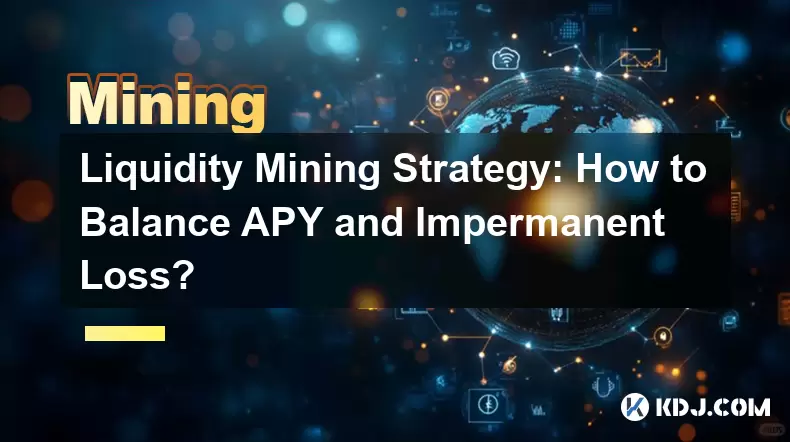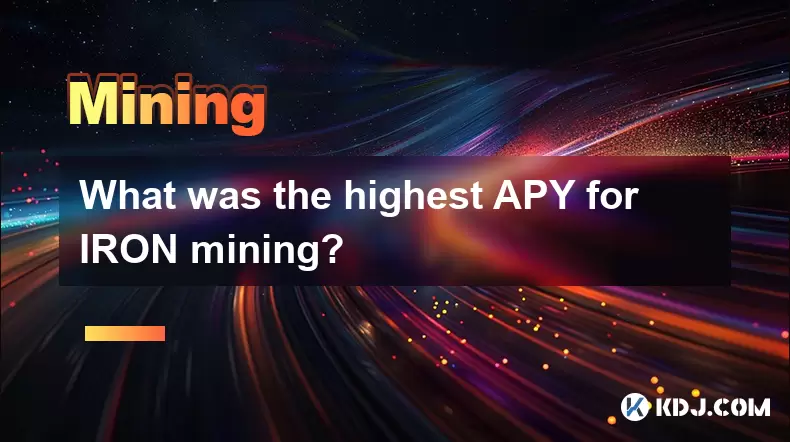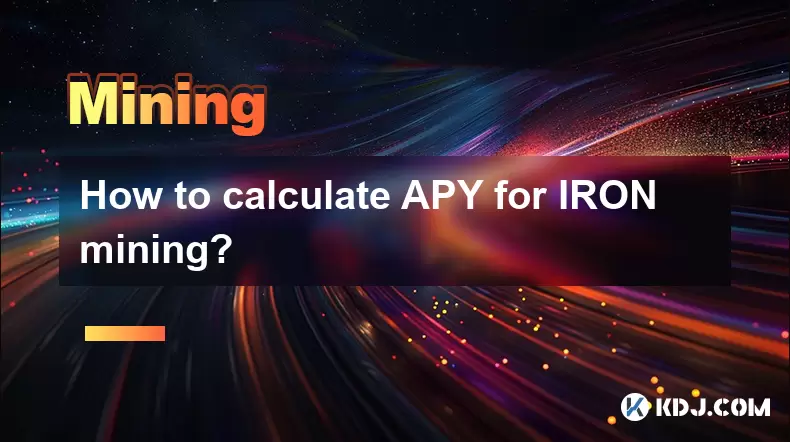-
 Bitcoin
Bitcoin $114400
1.32% -
 Ethereum
Ethereum $3499
2.20% -
 XRP
XRP $2.922
4.26% -
 Tether USDt
Tether USDt $0.0000
0.03% -
 BNB
BNB $752.6
1.53% -
 Solana
Solana $161.8
1.64% -
 USDC
USDC $0.9999
0.01% -
 TRON
TRON $0.3267
1.32% -
 Dogecoin
Dogecoin $0.1991
3.02% -
 Cardano
Cardano $0.7251
3.29% -
 Hyperliquid
Hyperliquid $38.32
3.36% -
 Stellar
Stellar $0.3972
7.58% -
 Sui
Sui $3.437
2.74% -
 Chainlink
Chainlink $16.29
3.65% -
 Bitcoin Cash
Bitcoin Cash $545.3
3.70% -
 Hedera
Hedera $0.2482
7.49% -
 Ethena USDe
Ethena USDe $1.001
0.03% -
 Avalanche
Avalanche $21.40
2.02% -
 Toncoin
Toncoin $3.579
1.56% -
 Litecoin
Litecoin $109.3
2.20% -
 UNUS SED LEO
UNUS SED LEO $8.951
-0.18% -
 Shiba Inu
Shiba Inu $0.00001220
2.75% -
 Polkadot
Polkadot $3.613
2.99% -
 Uniswap
Uniswap $9.173
3.78% -
 Monero
Monero $302.6
2.62% -
 Dai
Dai $0.0000
0.00% -
 Bitget Token
Bitget Token $4.320
1.52% -
 Pepe
Pepe $0.00001048
3.40% -
 Cronos
Cronos $0.1314
4.33% -
 Aave
Aave $259.4
3.54%
Liquidity Mining Strategy: How to Balance APY and Impermanent Loss?
Liquidity mining offers passive income but requires balancing high APY with minimizing impermanent loss through diversification and regular position adjustments.
May 26, 2025 at 10:21 am

Liquidity mining has become a popular way for crypto enthusiasts to earn passive income by providing liquidity to decentralized exchanges (DEXs). However, the strategy involves a delicate balance between maximizing Annual Percentage Yield (APY) and minimizing impermanent loss. In this article, we will explore various strategies to achieve this balance effectively.
Understanding APY in Liquidity Mining
APY, or Annual Percentage Yield, is a critical metric in liquidity mining that represents the potential earnings from providing liquidity to a DEX. The higher the APY, the more attractive the pool becomes for liquidity providers. However, high APY often comes with higher risks, including impermanent loss.
To understand APY better, consider the following factors:
- Pool Composition: The tokens in the liquidity pool can significantly affect the APY. Pools with volatile tokens tend to offer higher APYs to compensate for the increased risk.
- Incentives: Many DEXs offer additional incentives, such as governance tokens, which can boost the overall APY.
- Volume and Fees: The trading volume on the DEX and the fees charged per transaction directly impact the APY. Higher volumes and fees can lead to higher APYs.
Impermanent Loss Explained
Impermanent loss is a phenomenon that occurs when the price of tokens in a liquidity pool changes compared to when they were deposited. This loss becomes "impermanent" because it can potentially be recovered if the prices revert to their original state. However, if the prices do not revert, the loss becomes permanent.
To mitigate impermanent loss, it's essential to understand its mechanics:
- Price Divergence: The greater the divergence between the prices of the tokens in the pool, the higher the impermanent loss.
- Token Volatility: Highly volatile tokens are more likely to cause significant impermanent loss.
- Time Factor: The longer the tokens are held in the pool, the more significant the potential for impermanent loss.
Strategies to Balance APY and Impermanent Loss
Balancing APY and impermanent loss requires a strategic approach. Here are some strategies to consider:
Diversifying Liquidity Pools
One effective way to balance APY and impermanent loss is to diversify across multiple liquidity pools. By spreading your assets across different pools, you can reduce the impact of impermanent loss from any single pool.
- Select Stablecoin Pools: Stablecoin pools generally offer lower APYs but also have lower impermanent loss due to their stable nature.
- Mix Volatile and Stable Pools: Combining volatile and stable pools can help you achieve a higher overall APY while mitigating the risk of impermanent loss.
Monitoring and Adjusting Positions
Regularly monitoring and adjusting your positions in liquidity pools can help you manage both APY and impermanent loss. Here are some steps to consider:
- Track Price Movements: Keep an eye on the price movements of the tokens in your pools. If you notice significant divergence, consider rebalancing your positions.
- Rebalance Regularly: Rebalancing your positions periodically can help you minimize impermanent loss. For example, if one token in your pool has significantly appreciated, you might want to withdraw some of that token and deposit more of the other token.
- Use Automated Tools: Some platforms offer automated rebalancing tools that can help you maintain an optimal balance in your liquidity pools.
Hedging Against Impermanent Loss
Hedging is another strategy to mitigate the risk of impermanent loss while still benefiting from high APYs. Here's how you can hedge:
- Options and Futures: Using options or futures contracts can help you hedge against price movements of the tokens in your liquidity pools.
- Stablecoin Swaps: Swapping a portion of your volatile tokens for stablecoins can reduce the overall risk of impermanent loss.
Focusing on Long-Term Gains
While high APYs can be tempting, focusing on long-term gains can help you achieve a better balance. Here's how to approach this:
- Assess Long-Term Potential: Consider the long-term potential of the tokens in the liquidity pool. If you believe in the project's future, the impermanent loss might be worth enduring for the potential long-term gains.
- Staking and Governance: Participating in staking and governance can provide additional rewards that can offset the impermanent loss over time.
Evaluating Liquidity Pools
Before committing to a liquidity pool, it's crucial to evaluate it thoroughly. Here are some key factors to consider:
- Token Pair: The pair of tokens in the pool can significantly impact both APY and impermanent loss. Stablecoin pairs generally have lower impermanent loss, while volatile pairs offer higher APYs.
- Pool Size and Liquidity: Larger pools with higher liquidity tend to be more stable and can offer better APYs due to higher trading volumes.
- Incentives and Rewards: Look for pools that offer additional incentives, such as governance tokens, which can boost your overall returns.
Practical Example: Implementing a Liquidity Mining Strategy
To illustrate how to implement a liquidity mining strategy that balances APY and impermanent loss, let's walk through a practical example:
- Choosing a DEX: Start by selecting a reputable DEX that offers a variety of liquidity pools. For this example, let's use Uniswap.
- Selecting Pools: Choose a mix of stablecoin and volatile token pools. For instance, you might select a USDC/DAI pool for stability and an ETH/UNI pool for higher potential APY.
- Allocating Assets: Allocate your assets across these pools. For example, you might allocate 60% of your assets to the USDC/DAI pool and 40% to the ETH/UNI pool.
- Monitoring and Rebalancing: Regularly monitor the price movements of the tokens in your pools. If the price of ETH significantly diverges from UNI, consider rebalancing by withdrawing some ETH and depositing more UNI.
- Using Hedging Tools: Consider using options or futures contracts to hedge against potential price movements of ETH and UNI.
FAQs
Q: How often should I rebalance my liquidity pool positions?
A: The frequency of rebalancing depends on the volatility of the tokens in your pools. For highly volatile tokens, you might want to rebalance weekly or even daily. For more stable tokens, monthly rebalancing might be sufficient.
Q: Can I use multiple DEXs for liquidity mining?
A: Yes, using multiple DEXs can help you diversify your liquidity mining strategy. Each DEX might offer different pools and incentives, allowing you to optimize your APY and minimize impermanent loss.
Q: What are the tax implications of liquidity mining?
A: The tax implications of liquidity mining can vary depending on your jurisdiction. Generally, any income earned from liquidity mining, including fees and incentives, may be subject to income tax. It's advisable to consult with a tax professional to understand your specific situation.
Q: Are there any risks associated with liquidity mining besides impermanent loss?
A: Yes, besides impermanent loss, liquidity mining carries other risks such as smart contract vulnerabilities, rug pulls, and market risks. Always conduct thorough research and due diligence before participating in liquidity mining.
Disclaimer:info@kdj.com
The information provided is not trading advice. kdj.com does not assume any responsibility for any investments made based on the information provided in this article. Cryptocurrencies are highly volatile and it is highly recommended that you invest with caution after thorough research!
If you believe that the content used on this website infringes your copyright, please contact us immediately (info@kdj.com) and we will delete it promptly.
- BCUT: Support Holds, Accumulation Hints at Potential Reversal
- 2025-08-04 10:50:12
- Bitcoin's Bullish Expansion: Decoding Bollinger Bands and Whale Bets
- 2025-08-04 10:55:12
- XRP, Solana, and Whales: Decoding the Crypto Tides
- 2025-08-04 11:10:11
- BlockDAG's Grand Finale: Auction Fever and the Dawn of a New Era
- 2025-08-04 10:30:12
- Kaia Files: Will South Korea Embrace a KRW-Pegged Stablecoin?
- 2025-08-04 10:30:12
- Kaspa, HBAR, and Cold Wallet: A New York Minute on Crypto's Latest Moves
- 2025-08-04 09:11:54
Related knowledge

What was the highest APY for IRON mining?
Jul 23,2025 at 05:14am
Understanding IRON Token and Its Mining MechanismThe IRON token is a stablecoin that operates within the Iron Finance ecosystem, primarily on blockcha...

What is impermanent loss in IRON pools?
Jul 23,2025 at 09:00am
Understanding Impermanent Loss in the Context of IRON PoolsImpermanent loss is a phenomenon that affects liquidity providers in decentralized finance ...

How to claim rewards from IRON mining?
Jul 23,2025 at 02:21pm
Understanding IRON Mining and Reward MechanismsIRON Finance operated as a decentralized finance (DeFi) protocol on the Polygon and Binance Smart Chain...

How to claim rewards from IRON mining?
Jul 29,2025 at 05:07am
Understanding IRON Mining and Reward MechanismIRON is a dual-token system designed to stabilize the value of a synthetic asset through a combination o...

IRON mining tutorial for beginners
Jul 27,2025 at 12:01am
What Is IRON and How Does It Work in the Cryptocurrency Ecosystem?IRON is a cryptocurrency token that operates on the Binance Smart Chain (BSC) and is...

How to calculate APY for IRON mining?
Jul 28,2025 at 09:49am
Understanding APY in the Context of IRON Token MiningWhen engaging in IRON token mining within decentralized finance (DeFi) platforms, Annual Percenta...

What was the highest APY for IRON mining?
Jul 23,2025 at 05:14am
Understanding IRON Token and Its Mining MechanismThe IRON token is a stablecoin that operates within the Iron Finance ecosystem, primarily on blockcha...

What is impermanent loss in IRON pools?
Jul 23,2025 at 09:00am
Understanding Impermanent Loss in the Context of IRON PoolsImpermanent loss is a phenomenon that affects liquidity providers in decentralized finance ...

How to claim rewards from IRON mining?
Jul 23,2025 at 02:21pm
Understanding IRON Mining and Reward MechanismsIRON Finance operated as a decentralized finance (DeFi) protocol on the Polygon and Binance Smart Chain...

How to claim rewards from IRON mining?
Jul 29,2025 at 05:07am
Understanding IRON Mining and Reward MechanismIRON is a dual-token system designed to stabilize the value of a synthetic asset through a combination o...

IRON mining tutorial for beginners
Jul 27,2025 at 12:01am
What Is IRON and How Does It Work in the Cryptocurrency Ecosystem?IRON is a cryptocurrency token that operates on the Binance Smart Chain (BSC) and is...

How to calculate APY for IRON mining?
Jul 28,2025 at 09:49am
Understanding APY in the Context of IRON Token MiningWhen engaging in IRON token mining within decentralized finance (DeFi) platforms, Annual Percenta...
See all articles

























































































